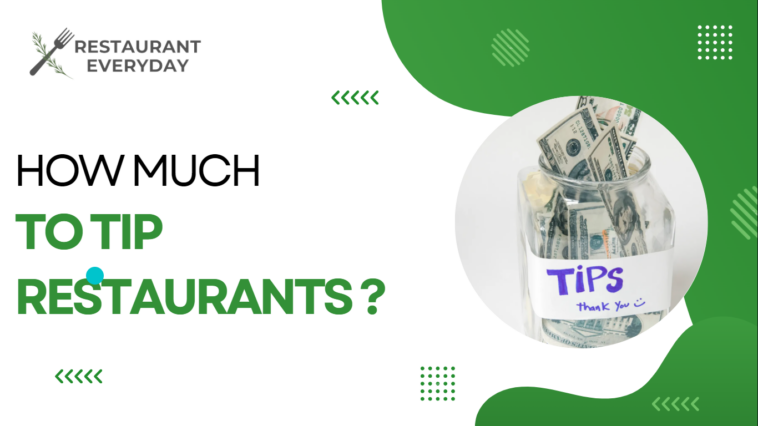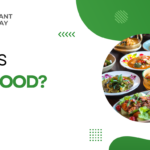When it comes to tipping, the first question that arises is: How much to tip Restaurant? So, knowing the general rule of thumb can help.
Determining the appropriate amount to tip at a restaurant can be a source of confusion for many people. While the standard practice is to leave 15-20% of the total bill, it’s important to consider the quality of service received. Exceptional service may warrant a larger tip, while poor service could justify a smaller one. Additionally, in some countries, tipping culture varies widely, making it crucial to research before dining out.
It’s also important to remember that tips often comprise a significant portion of a server’s income. As such, being generous with your gratuity can have a tangible impact on someone’s livelihood. This consideration can lead us to rethink our attitudes toward tipping and strive for generosity when possible.
What Is the History of Tipping?
The history of tipping is a centuries-long evolution shaped by cultural, social, and economic factors. Originating in 17th-century Europe, the practice gained traction as a way for wealthy patrons to ensure attentive service from hosts’ servants.
Tipping In The United States of America
In the United States, tipping faced resistance upon introduction but became more prevalent in the late 19th and early 20th centuries, particularly in the hospitality industry. During Prohibition in the 1920s, tipping took on added significance in speakeasies, providing discreet rewards for servers. The practice became deeply embedded in American culture during the Great Depression, viewed as a means for patrons to supplement the low wages of service workers. Post-World War II, tipping expanded further, especially in restaurants.
The Fair Labor Standards Act of 1938 introduced a lower minimum wage for tipped workers, a policy that continues to shape the compensation landscape today. Tipping practices vary globally, with some cultures incorporating service charges or eschewing tipping altogether. The history of tipping reflects a dynamic interplay of societal norms and economic structures, contributing to its diverse and sometimes contentious role in contemporary service industries.
Importance of tipping and how much to tip Restaurant
Tipping in restaurants is common in many countries and is often considered an essential aspect of the service industry. Here are some reasons why tipping is considered necessary:
- Supplementing Income: Restaurant workers often rely on tips to supplement their income in many places, particularly in the United States. Base wages for servers can be lower, and tips are crucial in ensuring that service staff earn a livable wage.
- Recognition of Service: Tipping is a way for customers to express their satisfaction with the service they receive. It allows patrons to directly reward servers for attentive, friendly, and efficient service.
- Motivation for Quality Service: Since tips are directly tied to the quality of service provided, they can motivate servers to go above and beyond in meeting customer needs. Good service can result in higher tips and repeat business.
- Customary Practice: Tipping has become customary in many cultures, and it is often expected in restaurants. Failing to tip or leaving a meager tip may be perceived as a sign of dissatisfaction with the service.
- Fair Compensation for Tip-Dependent Jobs: In some establishments, such as coffee shops or casual dining places, tips may be a significant portion of the income for employees. Tipping helps compensate those who work in tip-dependent jobs.
- Maintaining Affordability of Restaurants: In some cases, restaurants may keep menu prices lower because they anticipate that customers will contribute through tips. This can make dining out more affordable for customers.
Factors to consider when tipping at a Restaurant in Unites States
Related: How To Open A Restaurant In United States
Regarding tipping, there are various factors to consider to ensure a fair and respectful gesture towards service providers. One key factor is the quality of service received. Tipping should reflect attentiveness, friendliness, and overall satisfaction with the service provided.
Additionally, considering the industry standards for tipping is crucial; different industries, such as restaurants, hotels, and transportation, have customary tipping practices. It’s important to be aware of these norms to tip appropriately and show appreciation for the work done.
Another significant factor to consider when tipping is the economic conditions of your region or country. In some places, tips make up a significant portion of an individual’s income; in others, it is a mere bonus. Understanding the local economic context can help ensure that your tip has a meaningful impact on the recipient’s livelihood. Lastly, personal finances should also be considered when determining how much to tip. While generosity is commendable, it’s important not to overextend oneself financially when showing appreciation for good service.
Standard tipping percentages and amounts in Restaurants
The standard percentages and amounts can vary depending on different factors, such as the quality of service, location, and cultural norms. In most places in the United States, a 15-20% tip is considered standard for good service at a restaurant. However, some may need to realize that tipping etiquette extends beyond just dining out. Service providers such as hairdressers, taxi drivers, and hotel staff also rely on tips for their income.
How to handle exceptional service
Handling exceptional service with a gracious and appreciative attitude is courteous and can enhance your overall experience. Here are some tips on how to handle exceptional service:
- Express Gratitude Verbally: A simple “thank you,” and a genuine smile go a long way. Let the service provider know that you appreciate their exceptional service.
- Acknowledge Exceptional Service During the Experience: If you notice exceptional service during the experience (e.g., at a restaurant or hotel stay), acknowledge it now. This can motivate the service provider to maintain their high standard of service.
- Consider a Verbal Compliment: Go beyond a standard thank-you and provide specific compliments about what made the service exceptional. Acknowledging specific qualities, whether attentiveness, helpfulness, or going above and beyond, can be meaningful.
- Write a Positive Review: Consider leaving a positive review on Yelp, TripAdvisor, or Google Reviews. This shows your appreciation and helps others discover businesses that provide exceptional service.
- Increase the Tip: If you’re in an environment where tipping is customary (e.g., restaurants, hotels), consider increasing the tip amount to reflect the outstanding service. Tipping at the higher end of the customary range is a tangible way to show appreciation.
- Inform Management: If an employee provides exceptional service, consider informing the manager or supervisor about your positive experience. This can contribute to the recognition and reward of the service provider.
- Be Polite and Patient: Even when service is exceptional, remain polite and patient. Sometimes, unexpected issues can arise, and how you handle them can further demonstrate your appreciation for the service provider’s efforts.
- Use Social Media to Share Positive Experiences: If you’re active on social media, share your positive experience with your network. Tagging the business can give them positive exposure and inform others about the outstanding service.
- Return Business: If possible, consider becoming a repeat customer. Returning to establishments that provide exceptional service clearly indicates your satisfaction and appreciation.
- Provide Constructive Feedback: If specific aspects of the exceptional service stood out, mention them. This can be valuable feedback for the service provider and contribute to their professional development.
Remember, genuine appreciation is the key. People in the service industry often take pride in their work, and knowing their efforts are recognized and valued can be highly rewarding. By expressing your gratitude in various ways, you make the service provider’s day and contribute to a positive and uplifting work environment.
Some FAQs About Tipping in Different Services
Although calculating tips may seem like an additional task, it holds significant importance in specific industries. According to the U.S. Department of Labor, tipped workers are legally required to earn a minimum of $2.13 per hour, expecting that tips will supplement their income. To express appreciation appropriately for various services, here’s a guide on how to show gratitude through tipping.
How Much Tip at Restaurant?
The standard practice is to leave 15-20% of the total bill, it’s important to consider the quality of service received.
How much to tip at bars?
Tipping at bars is a common practice, and the standard tip for bartenders in the United States is typically $1 to $2 per drink or 15-20% of the total bill. Here are some considerations:
How much to tip at coffee shops?
A customary tip for a standard coffee order or a simple beverage is around $1 or 10-15% of the total bill, especially if you’re paying with cash.
A common practice for individuals using cash is to tip by leaving the change, a gesture frequently welcomed by baristas. You can also pay your Starbucks barista by leaving a tip with the app.
How much to tip delivery drivers?
While delivery fees can be substantial, it’s essential to note that these fees typically don’t directly benefit the driver.
Delivery companies like Grubhub recommend a 20 percent tip on your meal cost, especially if the delivery process is smooth. Additional tipping is advisable in scenarios involving challenging conditions, such as severe weather, multiple flights of stairs, or placing a sizable order, as it demonstrates gratitude for the driver’s effort in handling a demanding job.
How much to tip at hotels?
Tipping at hotels is a common practice to show appreciation for the services provided by various staff members. Here’s a general guide on how much to tip at hotels:
- Bellhop/Porter: Tip approximately $1 to $2 per bag for carrying luggage to your room. Tipping more if you have a significant amount of luggage or the service involves additional tasks.
- Housekeeping: Leave a daily tip for the housekeeping staff. A common range is $2 to $5 per night, left in a prominent place in the room with a note expressing your thanks.
- Concierge: Tipping for concierge services can vary based on the complexity of your requests. A tip of $5 to $10 is often suitable for general assistance. Consider a higher tip if the concierge goes above and beyond.
- Valet Parking Attendant: Tip the valet parking attendant $2 to $5 when your car is returned. Consider a higher tip if the service involves extra effort, such as retrieving your car during peak times.
- Room Service: If a service charge is not already included in the bill, consider a tip of 15-20% of the total. Verify the bill, as some establishments automatically add a service charge.
- Shuttle Drivers: If the hotel provides a shuttle service, consider tipping the driver $2 to $5 per trip, depending on the distance and service quality.
- Doorman: If the doorkeeper assists with hailing a taxi or provides other helpful services, a tip of $1 to $2 is appropriate.
- Front Desk/Check-in Staff: Tipping front desk staff is not customary. However, if a staff member goes above and beyond to assist you, you may consider a small tip or a thank-you note.
How much to tip at Cafe
Tipping at cafe is customary and generally ranges from 15% to 20% of the service cost. When determining the appropriate tip, consider the complexity and duration of the service, as well as the level of satisfaction with the results.
Some cafe may provide guidelines or include a suggested tip on the bill, but if not, the percentage above range is a widely accepted norm.
Additionally, if the salon provides exceptional service or goes the extra mile to ensure your comfort and satisfaction, tipping on the higher end of the range is a great way to acknowledge their efforts.
How much to tip for transportation
Tipping for transportation services can vary depending on the mode of transportation and the location.
- Taxi: In many places, tipping taxi drivers is customary. A common practice is to tip around 10-15% of the fare, rounding up to the nearest convenient amount.
- Uber/Lyft: Tipping through the app is a common practice for ride-sharing services like Uber and Lyft. The app usually provides options for tipping a percentage or a flat amount. A standard tip is around 15-20%.
- Airport Shuttle or Car Service: If you use a private car service or airport shuttle, consider tipping the driver around 15-20% of the fare.
- Limousine or Chauffeur Service: Tipping around 20% of the total fare is standard for more upscale transportation services. Some luxury services may include a gratuity in the bill, so it’s a good idea to check before tipping.
- Tour Bus or Group Transportation: Tipping is often expected for guided tours or group transportation. Check if the tour company provides guidelines, but a standard tip for the driver is around $1 to $2 per person.
- Valet Parking: If you use valet parking services, it’s customary to tip the valet attendant when your car is returned. A tip of $2 to $5 is standard.
- Delivery Services (e.g., Package Delivery): If you receive a package delivery to your location, it’s common to tip the driver if they provide additional services beyond the standard delivery.
People may also like to read: What Does 86 Mean In Restaurant ?




